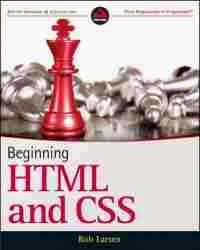<html>), within the web page content. HTML tags most commonly come in pairs like <h1> and </h1>, although some tags represent empty elements and so are unpaired, for example <img>. The first tag in a pair is the start tag, and the second tag is the end tag (they are also called opening tags and closing tags). In between these tags web designers can add text, further tags, comments and other types of text-based content.The purpose of a web browser is to read HTML documents and compose them into visible or audible web pages. The browser does not display the HTML tags, but uses the tags to interpret the content of the page. HTML elements form the building blocks of all websites. HTML allows images and objects to be embedded and can be used to create interactive forms. It provides a means to create structured documents by denoting structural semantics for text such as headings, paragraphs, lists, links, quotes and other items.
It can embed scripts written in languages such as JavaScript which affect the behavior of HTML web pages. Web browsers can also refer to Cascading Style Sheets (CSS) to define the appearance and layout of text and other material. The W3C, maintainer of both the HTML and the CSS standards, encourages the use of CSS over explicit presentational HTML.
Cascading Style Sheets (CSS) is a style sheet language used for describing the presentation semantics (the look and formatting) of a document written in a markup language. Its most common application is to style web pages written in HTML and XHTML, but the language can also be applied to any kind of XML document, including plain XML, SVG and XUL. CSS is designed primarily to enable the separation of document content (written in HTML or a similar markup language) from document presentation, including elements such as the layout, colors, and fonts. This separation can improve content accessibility, provide more flexibility and control in the specification of presentation characteristics, enable multiple pages to share formatting, and reduce complexity and repetition in the structural content (such as by allowing for tableless web design).
CSS can also allow the same markup page to be presented in different styles for different rendering methods, such as on-screen, in print, by voice (when read out by a speech-based browser or screen reader) and on Braille-based, tactile devices. It can also be used to allow the web page to display differently depending on the screen size or device on which it is being viewed. While the author of a document typically links that document to a CSS file, readers can use a different style sheet, perhaps one on their own computer, to override the one the author has specified.
CSS specifies a priority scheme to determine which style rules apply if more than one rule matches against a particular element. In this so-called cascade, priorities or weights are calculated and assigned to rules, so that the results are predictable. The CSS specifications are maintained by the World Wide Web Consortium (W3C). Internet media type (MIME type)
text/css is registered for use with CSS by RFC 2318 (March 1998), and they also operate a free CSS validation service.
If you develop websites, you know that the goal posts keep moving, especially now that your website must work on not only traditional desktops, but also on an ever-changing range of smartphones and tablets. This step-by-step book efficiently guides you through the thicket. Teaching you the very latest best practices and techniques, this practical reference walks you through how to use HTML5 and CSS3 to develop attractive, modern websites for today's multiple devices. From handling text, forms, and video, to implementing powerful JavaScript functionality, this book covers it all.
Download Beginning HTML and CSS
Other Related Ebook:
Sams Teach Yourself HTML and CSS in 24 Hours, 8th Edition







0 (mga) komento:
Post a Comment